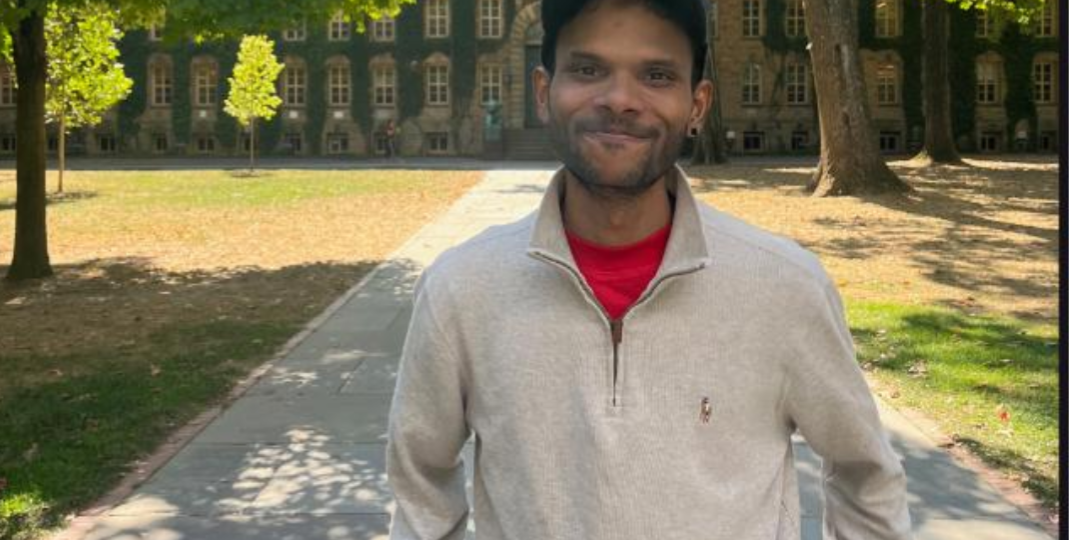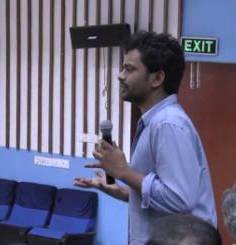Sumit Samos
Introduction: When we hear the word Dom, it is very often the seminal ethnography “Death in Banaras” by Jonathan Parry (1994) and Niraj Ghaywan’s popular film Masaan that come to our mind. And both of them have dealt with the theme of Doms being the corpse burners in the ghats of Banaras (a very popular Hindu pilgrimage site) and performing their caste duties. However, Doms are found across South Asia, and their social and cultural history can be quite multifaceted and complex if looked at regionally, beyond them being largely identified with the theme of burning dead bodies. And this essay deals with the lesser known and spoken about Doms of Odisha through Dom Baja (Desia Baja) – a community art form of drum beating accompanied by a pipe. Odisha also happens to be the state where Doms constitute to be one of the largest untouchable castes with a population of 706232, concentrated in the four districts of South Odisha namely Koraput, Nabrangpur, Rayagada and Malkangiri. If we were to add the numbers of those Doms who have converted to Christianity over the last one hundred years since the coming of German Lutheran and Danish missionaries, the numbers could be close to a million (Schäfer, 2024).
Studying South Odisha, Doms and the Dom Baja together opens up new methodological and thematic questions: for South Asian studies this means, they need to go beyond Punjab, Bengal, Deccan, Delhi and South India as established sub-regions, very few scholars such as Biswamoy Pati, a historian, and anthropologists such as Georg Pfeffer and Peter Berger who have looked at this stretch constituting a distinctive region stretching from Bastar in Chhattisgarh to Srikakulam in Andhra Pradesh. They have referred to it as high lands and Desia region which is how various communities here refer to it (Pfeffer, 2014; Berger, 2023).
This region, often described through the trope of ‘backwardness’ in academic scholarship and civil society, has resulted in studies focusing mostly on themes such as illiteracy, poverty and deprivation. Drawing upon Pfeffer (2014), I would like to move away from such characterizations. For Caste studies, this means, going beyond four fold and three fold caste societies (Maharashtra and Tamil Nadu) and going beyond politically visible Dalit castes (Mahars, Paraiyars, Chamars and Malas) to explore new frameworks and concepts to understand an untouchable caste living in a predominantly tribal society. For those studying subaltern music traditions and doing ethnomusicology, this means going beyond themes of appropriation, cultural labor and village rituals and situating Caste within the matrix of ongoing social and political churning to understand how caste subjectivities and art forms are discursively shaped and understood. Through this article, I attempt to reflect and hope to open up pathways to think about these questions. I have outlined three sections, first I would be historicizing South Odisha both in Colonial and Post-Colonial times and trace how caste subjectivities around Doms and Dom (Desia) Baja are articulated and diffused by different actors, in the second section, I would be be discussing the role of Dom Baja in everyday life in South Odisha, cultural performance and material production and in the final section I theorize shifts in the caste subjectivities around Dom Baja through my ethnographic findings.
Historicizing South Odisha, Doms and Dom Baja
In 1863, the local Jeypore feudatory alongside parts of Chhattisgarh and Andhra Pradesh was clubbed under ‘Agency Tract’ of Vizianagaram as a peripheral territory of the then Madras Province. This was under the supervision of an agent of the Madras governor. It was not a part of the Bengal Presidency as other parts of Odisha and till 1936, the political and administrative history of the region remained on the margin with little to no impact on what was happening in the presidencies.
In Colonial anthropology, the first recorded reference to Doms was by an ethnologist John Shortt (1868) in 1867, where he describes the Doms as Pariahs among a list of other castes and tribes. However, it was in 1869, in the manual of the District of Vizagapatnam in Madras Presidency (currently in Andhra Pradesh), Doms for the first time are described with specific characteristics which are reiterated in the subsequent census, gazettes and collector reports till 1945 (Carmichael, 1994) . The manual, apart from referring to the Doms as Pariahs, describes them as the laziest race in the country who keep up the supply of thieves, they weave and they are also tom-tom players at feasts. There are two sets of caste subjectivities of Doms articulated through this manual; one is that Doms have criminal propensity and the other is that Doms are musicians. Over the next many decades, through census, gazettes, collector reports and caste hindu narratives these two sets of subjectivities got consolidated as collective representations of the Dom Caste. The 1909 Volume 2 of Caste and Tribes, claimed that the word Dom is derived from Dumba (meaning devil) to refer to the thieving propensity of the Doms and that Doms are also musicians (Thurston & Rangachari, 1909). In 1923, Doms were labeled as criminal tribes according to the 1911 criminal tribes act and many were put behind prison as Khangars (notorious thieves).
Thus the caste subjectivities around Doms were institutionally legalized, discursively articulated by various actors and later also were psychologically internalized by a section of Doms. Many with their desire for reforms converted to Christianity under German Lutheran missions and Danish Missions in the first half of the 20th century. Among the Dom converts to Christianity, these reforms have been articulated through the language of lifestyle change and finding the one true God and many settled in small towns of South Odisha in settlements referred to as Mission Compounds for which the German Missionaries acquired land (Schäfer, 2024). But the afterlives of Dom Baja and Doms being unruly, backward and fringe elements continue even today which I will explain in the next section.
In the absence of land ownership for most Doms, they have usually made their livelihood by being hucksters in the villages where they would sell small amounts of tamarinds, dry fish, bangles etc in exchange for essential food items such as oil and salt which they could not produce. In the last three to four decades, the barter system gradually got substituted for cash money and local markets. Although weaving has been referred to as one of their occupations, a small section of them who practiced it could not keep up with changing modes of production and did not have the economic capacity to upscale their production and thus it gradually declined. After the 1980s, when mining projects were taken up, many Doms started working either as laborers or middle men to get laborers for the contractors. They, alongside other Desia communities have on many occasions been displaced from their places while others have been facing the consequences of environmental degradation( Stanley, 1996). The Doms also historically acted as mediators between the tribes (mainly the Kondhs in the hills ) and the caste Hindu population in the plains and worked as village guards. In the local hierarchy, alongside the various tribes (such as Godbas, Kondhs, Porjas, Parengs and Sauras) they are referred to as the Desias, (people from the land). The Desia categorization is posited in contrast to the Brahmins, Karanas and Komatis who have a different socio-cultural configuration and speak Sanskritized Odia from Coastal Odisha and Telugu respectively and are considered migrants in recent centuries.
The Brahmins and Karanas work as government employees in the townships of industrial projects and also have a hold over local business across small towns. They look down on the Desias who according to them are backward, uncivilized and need to improve their comportments and language. These unequal social relations manifest in everyday interactions in markets, local bureaucracy, banks and official events.
The communities who constitute the Desia identity share exogamous totemic clans (Bonshos), festivals and rituals around sacrifice and agriculture, language, notions of families and affines and myths and legends (Berger, 2023). In both the local and regional hierarchy, the Doms are at the end of the hierarchies although the motivations and notions of the hierarchy might be different. In the Desia socio-cultural milleu, although they are considered outcast, they are treated as social juniors based on the concept of seniority, their role as intermediary and for being hucksters. While for the Odia Brahmins, Karanas, Telugu Komtis and a section of Desia Sundis, they are treated as untouchables based on notions of purity and pollution.
Caste in both cases not only functions as an ideology but also leads to material consequences for Doms. Currently, many young people who have acquired college degrees in the few available colleges, try to make their living by working as Adhoc teachers, Auxiliary Nurses, Anganwadis, police constables and lower level maintenance workers in the mining companies and those who could not finish their education work as porters, auto rickshaw drivers, run petty shops and in dire conditions migrate to Andhra Pradesh, Gujarat, Telangana to work in construction sites. The absence of a strong middle class is quite noticeable in the community especially among Doms who claim to be Hindus.
Dom Baja in everyday life in South Odisha, rituals, cultural performance and material production
Dom Baja or Desia Baja is an integral part of everyday life in South Odisha and is symbolic of the regional identity politics and cultural expression termed as Desia. It is an instrumental orchestral music and the instruments forming the Dom baja can be divided into two categories
Dhapu, Tomok and Timki (Leather Drums) and a Mouri (Pipe). The leather of the drumhead is made up of cow hide, buffalo skin, goat skin and at times with Sambar deer. And it is played with two rubber sticks. The sound of the Mouri becomes quite significant for conveying appropriate emotion for different situations; funeral, invoking the deity and wedding preparatory event etc and it is usually the old men who play the Mouri. Dom baja from South Odisha can be compared with the Ganda Baja of Western Odisha in its form, role in village rituals, local festivals and that Doms and Gandas are considered to be one caste having different names in these two places. Lidia Guzy (2014), in her ethnomusical study of Ganda Baja in Western Odisha referred to it as ritual village music and her field work was done between 2002 to 2010. I differ from her categorization, because although village rituals and festivals are important spaces for the Dom Baja, it cannot be delimited to that.
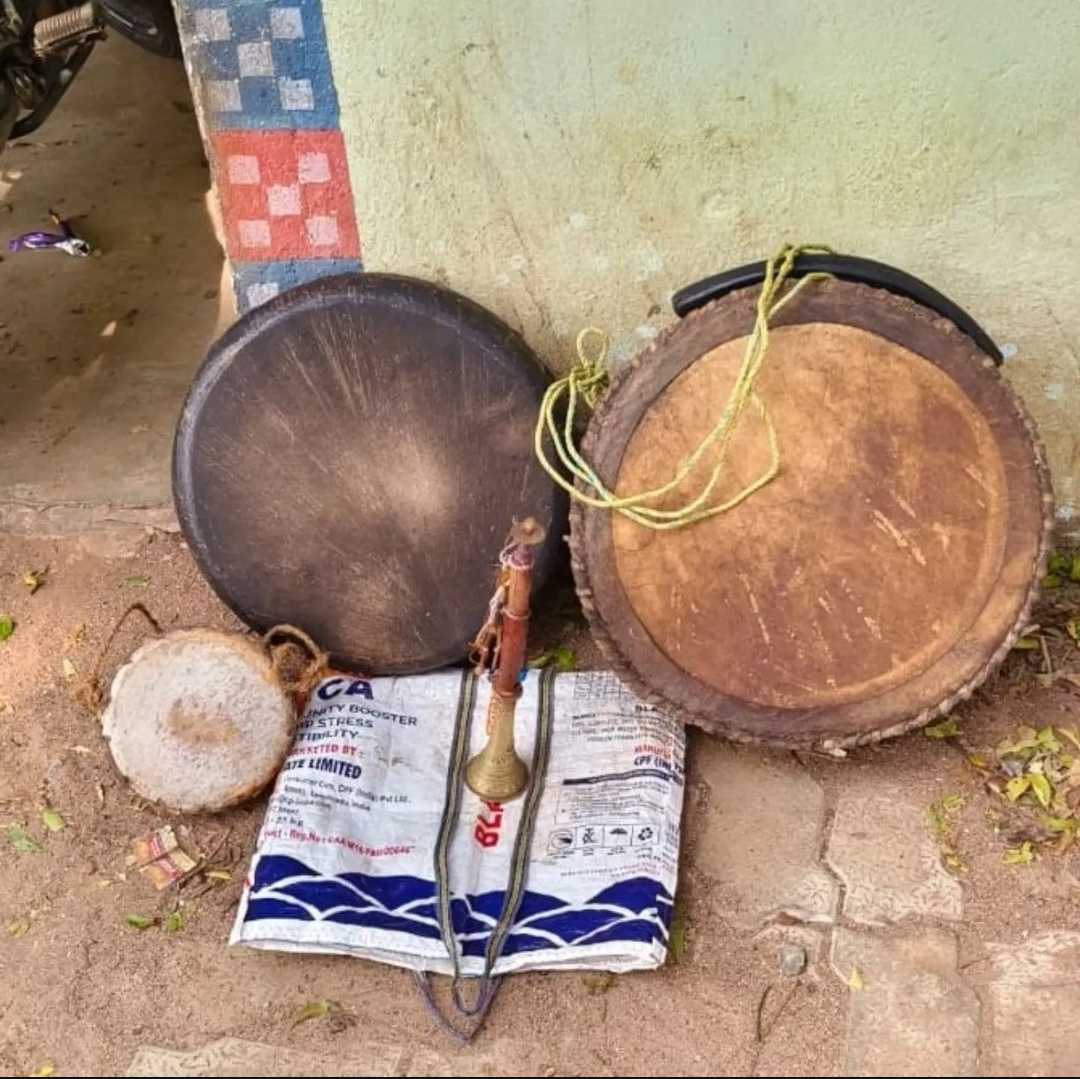
Over the last one decade, Dom baja beats have been extensively used in what is called ‘Album songs’, where the drum beats are recorded in the studios for songs with themes of heartbreak, love stories, description of nature and so on. And these songs are played everywhere for young people to dance to them and with no ritual elements to them. They are also played in ceremonies of Dom converts such as Bagdaan (betrothal ceremony) where the Dom baja is treated merely as a cultural heritage and during wedding processions it is played without the Mouri for people to dance. In neither of these events there is any invoking of spirit or deities, in fact there is a process of deritualization of Dom Baja among Dom converts.
The Mouri gets played only during life cycle rituals and sacrifices and exceptionally does it get played in non-religious settings. There are mainly three kinds of events in the village where Dom Baja is played;Porbo Porbani, Bibha Pani and Jatras ( Festivals, Weddings and annual village rituals ). And these festivals and annual rituals take place usually from February to May ( Fogun to Choit). To explain all the rituals and festivals is beyond the scope of the article, but there is one prominent ritual called Ghonto Jatra which is very popular in the region and Dom musicians often refer to it. Ghonto is basically a pot either earthen or made up of brass which is kept inside a Gudi or Kudia (a small hut) and it is believed that there are local deities which reside inside these pots. caste Hindus (Sundis) and a few hinduized desia communities such as the Jhodias keep rice mixed with turmeric powder and flowers inside these pots. This ritual is observed every year where these deities would be invoked with the Dom baja being played outside the Gudi and few caste hindus and Desia people would carry the Handis and Manos (Pots) and get them to the villages. Once the Mouri starts getting louder and is played close to the ears of the people carrying the pots, they would start shaking and dancing which makes people believe that the specific village Gods have descended upon the person and possessed them.
They would then be invited to the houses of villagers and be worshiped. However, throughout the process, Doms are kept outside the Gudi as well as the houses in the village and the procession of possessed people are not taken into the Dom settlements. The objective of the Jatra is to maintain Sukho Shanti (Peace and prosperity) and to keep away from Rogo Joro (Sickness and Fever). However, the very people without whom the villagers believe that the deities cannot be invoked do not permit the Jatra to their houses and keep them outside.
For a long time, the Dom musicians would not be paid in cash but would be given a few drinks of cheap local alcohol, food to eat and play for hours. When I asked one of the senior
Dom musicians as to why they never complained about this, his response was that ‘ Eta gote porompora’ chali asichi toh chali asichi’ (This is a tradition so we just kept doing what had been happening for generations). Thus the physical and cultural labor of the Doms get exploited under the euphemism of Porompora (tradition) which in reality is caste duty. But despite the immense appeal of Dom baja across secular album songs and religious ritual domain for people of all castes in the past two decades, the Dom musicians live through invisibilization and precarious livelihood which stands in contrast to how Odissi artists are received, recognized and celebrated in the public discourse despite it being performed in spaces and events organized a tiny minority of upper castes.
Since Doms at one point were considered to be associated with picking up dead carcasses and eating beef (many still continue to eat beef) and notions of impurity and pollution were attached to them. No other caste or tribe engages in the process of skinning the cows and buffaloes, drying the skin with salt and refining them to make the leather drums. However, in the last two decades there have been few shifts, many Dom musicians have stopped making the instruments out of Cow and buffalo skin claiming that they are being stigmatized with Ghrunito monobhabo (deep sense of contempt) from others.
Hindutva too has been consolidating in the region and any association with cows or buffaloes could be risky and since many Doms have converted to Christianity, the right wing groups use the symbol of cow to build hostility against Doms in general. Due to reducing forest cover and curtailing of movements especially during the peak years of Maoist and CRPF conflict between 2005 to 2012, hunting Sambar deers too became difficult. Furthermore, with electricity coming in many rural villages, pre-recorded Desia baja is played in DECKSETS (meaning loudspeakers) in many Desia settlements for night time dancing and weddings.
The success of Band Party (where keyboards gets played only with few Dhapus and a number of smaller Dhapus with plastic surface) in Western Odisha and the flourishing of an music industry of the Ganda caste had an impact among the Dom musicians in South Odisha and Band party gradually diminished the importance of Mouris and Tomoks especially in weddings and public rallies. In the last few years, local DJs with EDM and Techno beats have further accentuated this process with young people consuming a variety of music genres.
These changes in mode of production and technical innovations have been leveraged by the Komatis (a Telugu caste involved in wholesale trade) to further their market interests. The Matka base of Dhapus are being replaced with steel. Furthermore, managing a band party requires market branding and a truck to carry the large speakers and performers and since Doms lack the means of production as well as access to the market, some of the Desia band parties are being managed by the Caste Hindus.
Shifts in Caste subjectivities around Dom Baja (Desia Baja )
As I noted in the beginning, there were two tropes around Dom caste which described their caste subjectivities and legitimized them over a period of time, one is that of them being (Khangars) having criminal and unruly tendencies and the other is them playing Desia Baja or Dom Baja.
These two subjectivities as described fits into the popular anthropological debate of consensus and conflict (Deliege, 1992; Moffatt, 1979), the criminal tendencies as conflict against ascribed inferior status while performing Desia Baja as accepting one’s low position in the hierarchy to by consenting to the caste ideology of occupation. However, through my ethnography, I find that the caste subjectivities currently as seen from among the Doms through the Dom Baja do not neatly fit into these dichotomies. I argue that there are aspects of negotiation, reappropriation and resistance that have developed over the last few decades.
I would like to explain these aspects through a few key socio-political changes over the last two decades; Maoist movement gained ground in parts of South Odisha since 2002 against land grabbers and exploitative money lenders, (mostly belonging to the locally dominant Komati and Sundi Caste). Although it gradually disintegrated around 2013 due to years of factional fights, disenchantment of a section of Adivasis and State repression, the visible everyday acts of caste dominance of a section of Sundis and Komatis had receded. This paved the way for possibilities of negotiation to Kondhs and Doms who earlier had to speak from a dominated position. And this resulted in what many Dom musicians refer to as ‘Poisa Chhindai kori aka jibu ame’ (Only after negotiating the price, we would go and perform). Chhindaiba in the Desia language translates to sealing off something and making a deal as an equal partner. It does not involve conflict or consensus but negotiation as equals.
The other important social process was the spread of Christianity in rural parts of South Odisha especially among Doms and Kondhs in the last two decades. This entailed the imagination of a new moral economy and cosmology where the past had to be done away with by becoming ‘Born again believer’.. In this new moral economy, performing for certain life cycle rituals and festivals meant bowing down before a spirit and involving animal sacrifices and many Dom convert musicians stopped playing for many such events. Instead, the Dom Baja was reappropriated and inscribed with a new meaning where Dom Christian musicians would play Christian hymns during weddings and Betrothal ceremonies. On the other hand, in small towns, the long enduring presence of Christianity, cultural exchanges with German missionaries over the decades, with churches across the border in Chhattisgarh and Andhra Pradesh, introduction of Guitar, Drums and Keyboard in churches and a certain kind of German Lutheran style of singing hymns, has led to a new form of cultural production. The concomitant self-fashioning associated with this is deployed by the Dom Christians as a strategic imperative to distinguish themselves from the vernacular Odia cultural production embedded in Caste Hindu values and expressions.
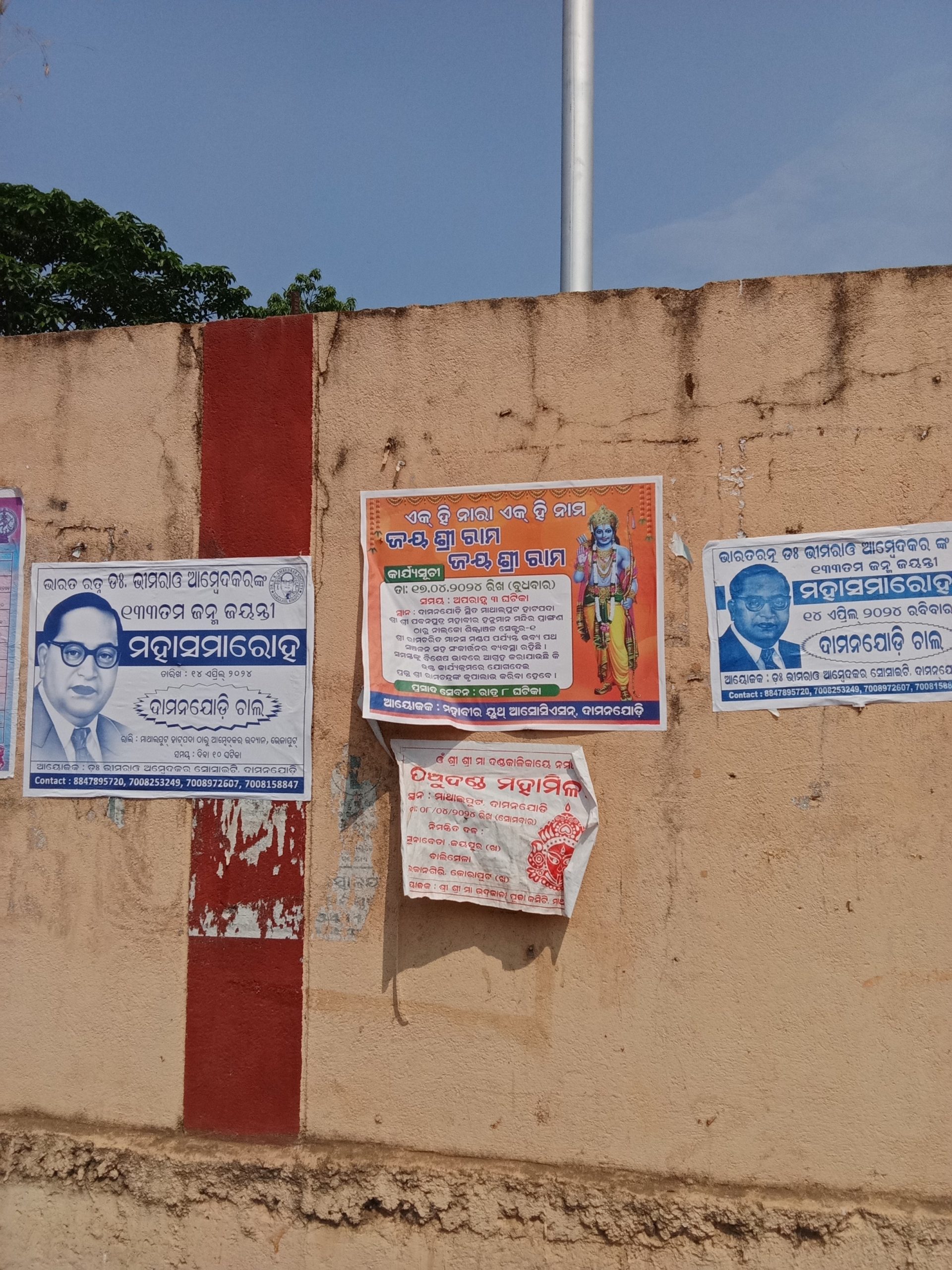
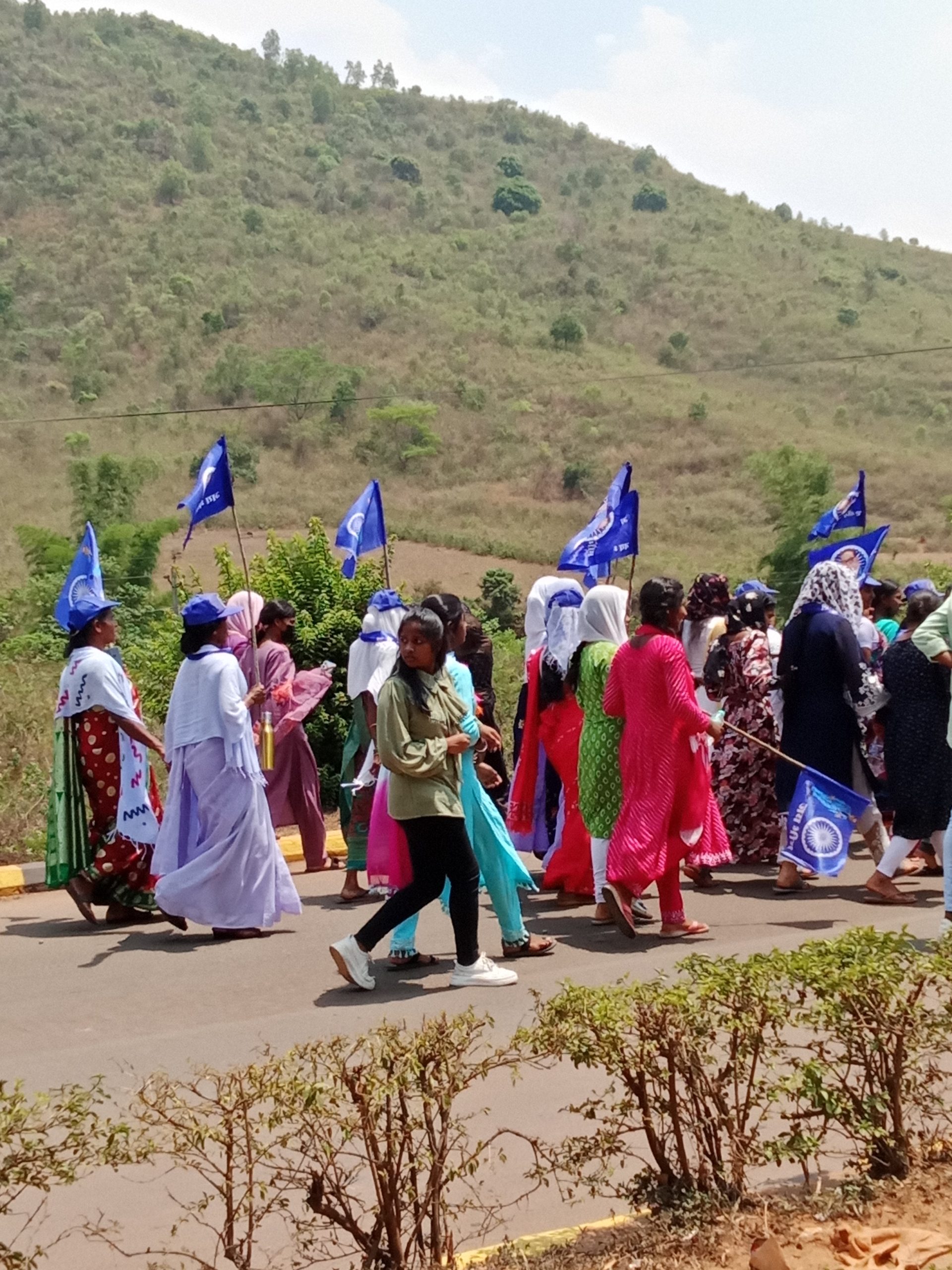
Lastly, I would also like to discuss how Dom Baja can also become a mobilizing strategy to resist caste Hindu domination and right-wing Hindutva. On April 14, 2024 when Doms in Damanjodi decided to organize a huge rally to celebrate Ambedkar Jayanti, the local RSS unit decided to disrupt it and instigate conflict by placing Jai Shri Ram in all the street light poles and walls. To counter it, the Doms placed Ambedkar flags and photos everywhere right opposite to Jai Shri Ram images and flags. Next day when the rally was about to begin, they were apprehensive if people were going to join because they did not have the necessary funding to advertise well. But few of the organizers argued that once the Band Party along with Dom Baja was played, people would start joining and almost hundreds of people joined the rally since other Doms were dancing to it and they had a faint glimpse of who Ambedkar was. This was a case of not just resistance but also claiming public space which often are sites of expressing dominance by Caste Hindus through their events and festivals.
References
Berger, P. (2023). Subaltern Sovereigns : Rituals of Rule and Regeneration in Highland Odisha, India (1st ed.). De Gruyter,. https://doi.org/10.1515/9783110458831.
Carmichael, D. F. (1994). Andhra Pradesh district gazetteers : a manual of the district of Vizagapatam in the presidency of Madras. State Editor, District Gazetteers, Govt. of Andhra Pradesh.
Deliege, R. (1992). Replication and Consensus: Untouchability, Caste and Ideology in India. Man, 27(1), 155–173. https://doi.org/10.2307/2803599.
Guzy, L. (2014). Media Transformations: Music, Goddess Embodiment, and Politics in Western Orissa/India. In H. Behrend (Ed.), Trance Mediums and New Media: Spirit Possession in the Age of Technical Reproduction (pp. 171-182). New York, USA: Fordham University Press. https://doi-org.ezproxy-prd.bodleian.ox.ac.uk/10.1515/9780823253838-011.
Moffatt, M. (1979). An untouchable community in South India : structure and consensus (1st ed.). Princeton University Press. https://doi.org/10.1515/9781400870363
Parry, J. P. (1994). Death in Banaras. Cambridge University Press.
Pfeffer, G. (2014). Ethnographies of States and Tribes in Highland Odisha. Asian Ethnology, 73(1/2), 259–279. https://doi.org/10.18874/ae.73.1-2.13.
Schäfer, S. M. (2024). “Together we are strong!” Infrastructures of community, safety and power on a Christian Mission Compound. Religion, State & Society, 52(2–3), 195–214. https://doi.org/10.1080/09637494.2024.2356932
Shortt, J. (1868). A Contribution to the Ethnology of Jeypore. Transactions of the Ethnological Society of London, 6, 264–364. https://doi.org/10.2307/3014266.
Stanley, W. (1996). Machkund, Upper Kolab and NALCO Projects in Koraput District, Orissa. Economic and Political Weekly, 31(24), 1533–1538.
~~~
Sumit Samos is a writer and researcher based out of Chennai. His research interest revolves around Dalit Christians, Music and Caste in Odisha.

